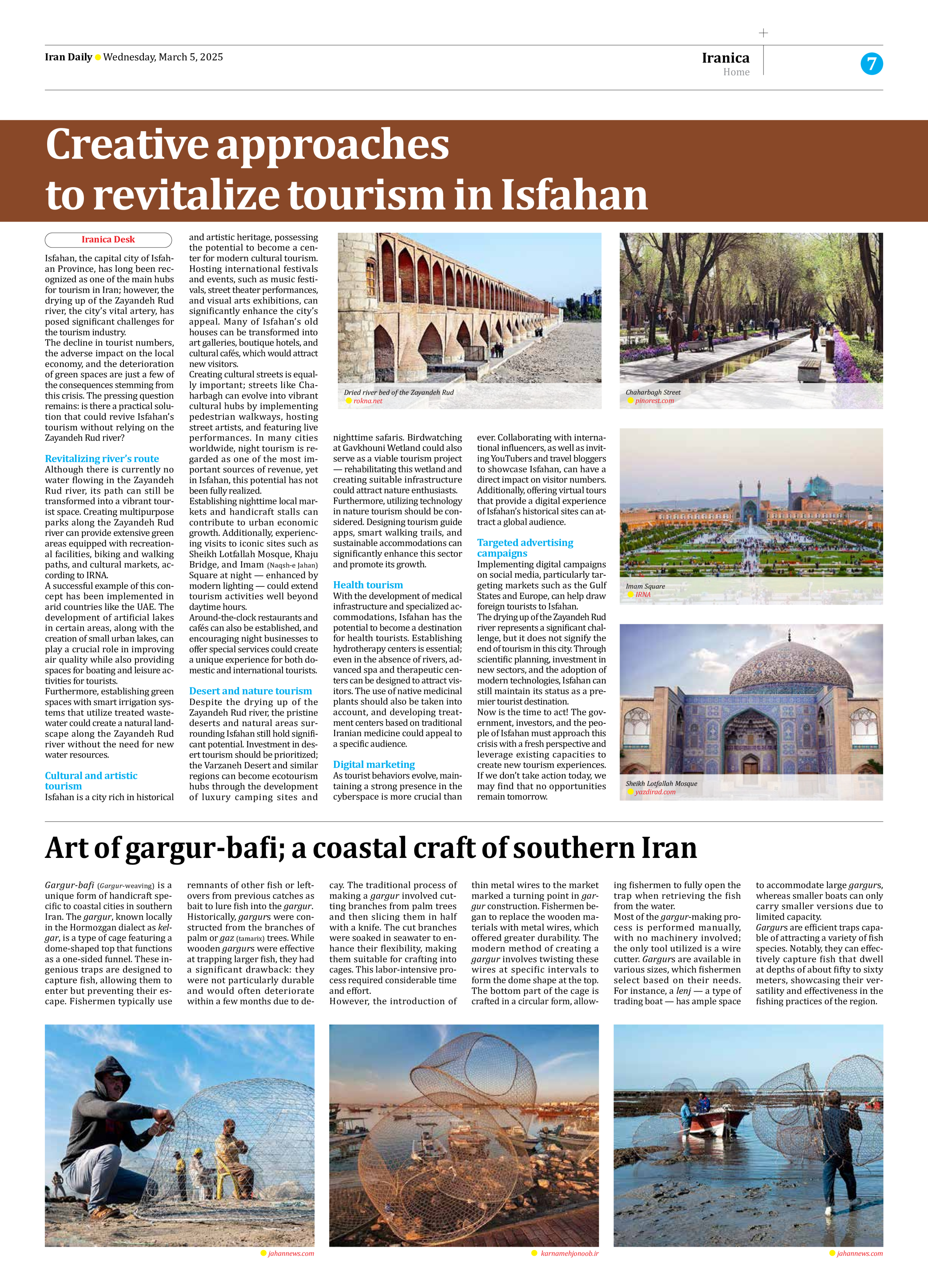
Art of gargur-bafi; a coastal craft of southern Iran
Gargur-bafi (Gargur-weaving) is a unique form of handicraft specific to coastal cities in southern Iran. The gargur, known locally in the Hormozgan dialect as kelgar, is a type of cage featuring a dome-shaped top that functions as a one-sided funnel. These ingenious traps are designed to capture fish, allowing them to enter but preventing their escape. Fishermen typically use remnants of other fish or leftovers from previous catches as bait to lure fish into the gargur.
Historically, gargurs were constructed from the branches of palm or gaz (tamarix) trees. While wooden gargurs were effective at trapping larger fish, they had a significant drawback: they were not particularly durable and would often deteriorate within a few months due to decay. The traditional process of making a gargur involved cutting branches from palm trees and then slicing them in half with a knife. The cut branches were soaked in seawater to enhance their flexibility, making them suitable for crafting into cages. This labor-intensive process required considerable time and effort.
However, the introduction of thin metal wires to the market marked a turning point in gargur construction. Fishermen began to replace the wooden materials with metal wires, which offered greater durability. The modern method of creating a gargur involves twisting these wires at specific intervals to form the dome shape at the top. The bottom part of the cage is crafted in a circular form, allowing fishermen to fully open the trap when retrieving the fish from the water.
Most of the gargur-making process is performed manually, with no machinery involved; the only tool utilized is a wire cutter. Gargurs are available in various sizes, which fishermen select based on their needs. For instance, a lenj — a type of trading boat — has ample space to accommodate large gargurs, whereas smaller boats can only carry smaller versions due to limited capacity.
Gargurs are efficient traps capable of attracting a variety of fish species. Notably, they can effectively capture fish that dwell at depths of about fifty to sixty meters, showcasing their versatility and effectiveness in the fishing practices of the region.







